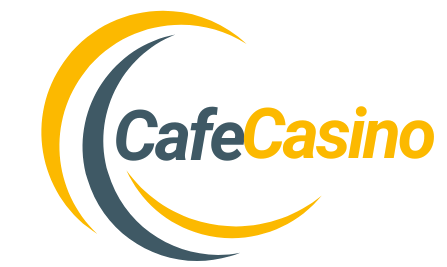As a digital mapping enthusiast, I’ve seen firsthand how navigating our world has become increasingly complex. Traditional maps and even early digital solutions often need to catch up, leaving us frustrated and lost in a sea of information.
That’s where Ùmap comes in. This innovative platform is revolutionizing digital cartography, offering an intuitive, interactive way to create and explore maps. With Ùmap, anyone can easily visualize data, plan events, or conduct research using powerful yet user-friendly tools.
Are you curious about how Ùmap is changing the game in digital mapping? Want to know how it can benefit you, whether you’re a researcher, event planner, or just someone who loves maps? Keep reading to discover the features, applications, and future potential of this exciting technology. You’ll be amazed at how Ùmap is reshaping our understanding of the world around us.
Introduction to Ùmap
Ùmap stands at the forefront of digital mapping innovation, offering a dynamic and interactive solution for users across various industries. Born from the evolution of digital cartography, Ùmap represents a significant leap forward in how we create, share, and utilize maps in the digital realm.
The platform’s inception marks a pivotal moment in the journey of digital mapping. Unlike traditional static maps or even early digital versions, Ùmap provides users with unprecedented flexibility and interactivity. It’s not just about displaying geographical data; it’s about engaging with it in meaningful ways.
What sets Ùmap apart is its commitment to user-friendly design coupled with powerful functionality. Whether you’re a casual user looking to create a simple map for a local event or a professional researcher visualizing complex spatial data, Ùmap offers tools and features to meet your needs.
The Evolution of Digital Mapping
To truly appreciate Ùmap’s significance, it’s essential to understand the evolution of digital mapping. The journey from paper maps to sophisticated digital platforms like Ùmap has been nothing short of revolutionary.
In the early days of digital mapping, we saw basic GPS navigation systems and rudimentary online maps. These were significant improvements over paper maps, offering real-time location tracking and basic routing capabilities. However, they were still limited in terms of interactivity and customization.
As technology advanced, so did digital mapping. We saw the rise of more sophisticated mapping applications that offered satellite imagery, street-level views, and the ability to add custom markers. These developments paved the way for platforms like Ùmap, which take digital mapping to new heights.
Ùmap represents the latest stage in this evolution, offering features that were once the stuff of science fiction. Real-time updates, collaborative editing, and the ability to overlay multiple data sets are just a few of the capabilities that make Ùmap a game-changer in the world of digital cartography.
Understanding Ùmap’s Features and Functionality
At its core, Ùmap is designed to empower users to create, customize, and share interactive maps with ease. Let’s explore some of the key features that make Ùmap stand out:
- Interactive Map Design
- Drag-and-drop interface for easy map creation
- Customizable markers, polygons, and lines
- Layer management for complex data visualization
- Data Integration
- Support for various data formats (CSV, GeoJSON, KML, etc.)
- Real-time data updates
- Integration with external APIs for live data feeds
- Collaboration Tools
- Multi-user editing capabilities
- Commenting and feedback system
- Version control for tracking changes
- Customization Options
- Branding elements (logos, color schemes)
- Custom base maps and overlays
- Responsive design for various devices and screen sizes
These features combine to create a powerful yet accessible platform. Whether you’re mapping out a neighborhood for a community project or visualizing global data for a research paper, Ùmap provides the tools you need to bring your geographical information to life.
Real-World Applications of Ùmap
The versatility of Ùmap extends far beyond theoretical concepts. Its practical applications span various industries and scenarios, demonstrating its value in real-world contexts.
Academic Research
In the realm of academia, Ùmap has become an invaluable tool for researchers across disciplines. From anthropologists mapping cultural phenomena to environmental scientists tracking ecosystem changes, Ùmap offers a platform to visualize and analyze spatial data in new ways.
Researchers appreciate Ùmap’s ability to handle large datasets and create visually compelling representations of their findings. The platform’s collaborative features also facilitate teamwork on complex research projects, allowing multiple contributors to work on the same map simultaneously.
Urban Planning and Community Development
City planners and community organizers have found Ùmap to be a powerful ally in their work. The platform enables them to create interactive maps of neighborhoods, highlighting resources, planned developments, and areas in need of attention.
These maps serve as valuable tools for community engagement, allowing residents to visualize proposed changes and provide feedback. Ùmap’s user-friendly interface makes it possible for even non-technical users to contribute to these mapping projects, fostering a sense of community involvement in urban planning processes.
Event Planning and Management
Event organizers have embraced Ùmap as a solution for creating interactive event maps. From music festivals to marathons, Ùmap allows planners to map out event locations, highlight points of interest, and provide attendees with an intuitive way to navigate large-scale events.
The ability to update maps in real-time is precious for events, as organizers can quickly communicate changes or updates to attendees through the map interface.
Business and Marketing
In the business world, Ùmap has found applications in market analysis, sales territory mapping, and location-based marketing. Companies use the platform to visualize customer data, plan expansion strategies, and optimize distribution networks.
The platform’s ability to integrate with other data sources and APIs makes it a versatile tool for businesses looking to leverage geographical data in their decision-making processes.
Technical Aspects of Ùmap
Behind Ùmap’s user-friendly interface lies a sophisticated technical infrastructure. Understanding these technical aspects can help users appreciate the platform’s capabilities and potential for future development.
- Open-Source Foundation
- Built on open-source technologies
- Transparent development process
- Community-driven improvements and extensions
- Data Handling and Processing
- Efficient algorithms for handling large datasets
- Support for various geospatial data formats
- Real-time data processing capabilities
Ùmap’s open-source nature is a key strength, allowing for continuous improvement and customization. Developers can contribute to the platform’s growth by adding new features and refining existing ones. This collaborative approach ensures that Ùmap remains at the cutting edge of digital mapping technology.
The platform’s data-handling capabilities are equally impressive. Ùmap can process and visualize large amounts of geospatial data quickly and efficiently. This is crucial for applications that require real-time updates or deal with complex datasets.
Security and privacy are also paramount in Ùmap’s technical design. The platform implements robust measures to protect user data and ensure compliance with data protection regulations. This is particularly important for users dealing with sensitive or proprietary information in their mapping projects.
Challenges and Future Trends
While Ùmap has made significant strides in advancing digital mapping, it’s not without its challenges. Understanding these challenges and looking at future trends can give us insight into the platform’s potential trajectory.
Current Challenges
Data accuracy remains a persistent challenge in digital mapping, and Ùmap is no exception. Ensuring that maps are based on up-to-date and accurate information is crucial for maintaining user trust and the platform’s reliability.
Privacy concerns also loom large in the world of digital mapping. As Ùmap collects and processes location-based data, it must navigate the complex landscape of data protection regulations and user privacy expectations.
Technical limitations, such as performance issues with massive datasets or compatibility challenges with specific devices, are areas where Ùmap continues to evolve and improve.
Future Trends
Looking ahead, several exciting trends are shaping the future of Ùmap and digital mapping as a whole:
- Artificial Intelligence Integration
- Machine learning for predictive mapping
- AI-powered data analysis and insights
- Automated map creation and optimization
- Augmented Reality (AR) Applications
- Overlay of digital map information in real-world environments
- Interactive AR experiences for navigation and exploration
- Integration with AR devices for immersive mapping
The integration of artificial intelligence holds tremendous potential for Ùmap. AI algorithms could enhance the platform’s ability to analyze spatial data, predict trends, and even automate certain aspects of map creation.
Augmented reality represents another frontier for Ùmap. The ability to overlay digital map information onto the natural world through AR devices could revolutionize how we interact with and understand our environment.
Conclusion
Ùmap is leading the charge in digital mapping innovation. Its user-friendly design and powerful features make it invaluable for diverse users, from researchers to event planners. As we look ahead, Ùmap is poised to embrace new technologies like AI and AR, overcoming challenges and pushing the boundaries of what’s possible in digital cartography.
Whether you’re a mapping pro or just starting, Ùmap opens up a world of possibilities for visualizing and understanding geographical data. As our world becomes increasingly data-driven, Ùmap will continue to play a crucial role in how we interact with and comprehend the geography around us.
(FAQs)
What is Ùmap?
Ùmap is an interactive digital mapping platform that allows users to create, customize, and share maps with advanced features and real-time updates.
Who can use Ùmap?
Anyone can use Ùmap, from casual users creating simple event maps to professionals conducting complex spatial analysis for research or business purposes.
Is Ùmap challenging to learn?
No, Ùmap is designed with a user-friendly interface, making it accessible for beginners while still offering advanced features for experienced users.
Can Ùmap handle large datasets?
Yes, Ùmap is capable of processing and visualizing large amounts of geospatial data efficiently.
Is my data secure on Ùmap?
Ùmap prioritizes data security and privacy, implementing robust measures to protect user information and comply with data protection regulations.



